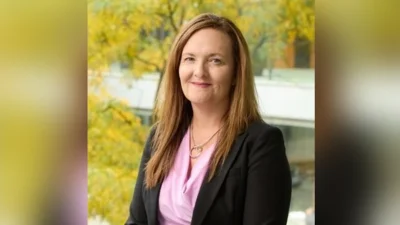A group of Shenandoah University students, faculty and staff journeyed to Florida earlier this summer and were treated to a special educational experience that included stops at the Walt Disney World Resort and the Kennedy Space Center.
The trip, which took place over eight days in mid-June, was part of Shenandoah’s Global Experiential Learning (GEL) Program, which provides students with short-term, credit-bearing, faculty-led experiences all over the world. The June GEL trip to Florida was designed as a domestic venture due to challenges posed by the COVID-19 pandemic, according to Associate Professor of Virtual and Augmented Reality Nathan Prestopnik, Ph.D., who led the trip alongside Visiting Assistant Professor of Curriculum and Instruction Jennifer LaBombard-Daniels, Ph.D.
Dr. Prestopnik said the trip, which focused on experience design and STEM education, was unique among other GEL offerings in that SU students and employees were joined by teachers from Winchester Public Schools’ METRICS program who specialize in computer science and STEM-focused activities. About 35 people participated in the trip, making it three times larger than most other GEL trips, Prestopnik noted.
Shenandoah’s group included primarily Division of Applied Technology students, mostly those in the virtual reality design program. Shenandoah Center for Immersive Learning staff also went on the trip.
The group participated in three Disney Imagineering workshops, which offered private tours of various parts of the Disney World Resort in Orlando, the chance to perform design activities with park staff, and behind-the-scenes looks at a couple of attractions. The workshops focused on immersive storytelling, theme park technology and theme park design.
Prestopnik said the group saw the computer control and maintenance areas for Remy’s Ratatouille Adventure, a 4D attraction at EPCOT based on the film “Ratatouille.” Participants also went backstage at the Hall of Presidents at Magic Kingdom Park and viewed the mechanism that runs the attraction. Prestopnik said the Hall of Presidents, which opened in 1971, still uses the original computing system to operate the animatronic attraction’s many moving parts.
Prestopnik said the Disney World part of the trip was meant to provide insight into how experiences are designed, while the visit to Kennedy Space Center offered additional examples of how design elements play a role in user experience.
“They really think about these things, how to tell a story in a unique way using the space and using the design of the objects that they’re showing you. It’s very, very cool, and I think that was a major takeaway for people on this trip.”
Nathan Prestopnik, Ph.D., Shenandoah University associate professor of virtual and augmented reality
During a two-day visit to Kennedy Space Center, the group toured the museum, where participants learned about NASA and the U.S. Space Program and viewed the Space Shuttle Atlantis, a Saturn V rocket (the type that NASA used to launch astronauts to the moon during the Apollo missions in the late 1960s and early 1970s), and a Falcon 9 rocket produced by SpaceX. The latter is the same rocket that launched Elon Musk’s personal Tesla roadster into space in 2018, Prestopnik said.
On the night of the group’s first day at Kennedy Space Center, tripgoers went to Cocoa Beach at midnight to watch the launch of another Falcon 9 rocket happening 5 miles away at Cape Canaveral.
“My experiences on the Disney/NASA GEL Trip drastically expanded my understanding of immersive learning experiences,” said Deborah Diner, fourth-grade teacher and SU cooperating teacher at Garland R. Quarles Elementary School in Winchester. “Over three days at Disney, I learned about the diverse range of skills and professions that must come together to create truly immersive, spellbinding experiences. At NASA, I saw how those experiences can be leveraged to teach and instruct in an innovative, engaging way.”
On the second day at Kennedy Space Center, group members participated in an astronaut training event and learned about working in space, communications between astronauts and control facilities on the ground, and how U.S. astronauts are trained.
Dr. LaBombard-Daniels said the Astronaut Training Experience (ATX) was an “amazing” culmination of the trip’s immersive experience, which included VR moonwalks, a microgravity simulator, Mission Control ISS docking station and Mars Rover mission.
“All participants learned the intensity of how astronauts train and practice their missions through real-world experiences. This experience was a first-hand look into the use of XR [extended reality] in training and helping employees understand the seriousness of the jobs at hand. These experiences can be implemented into training in any field where the objective is to get your participants to learn the task without the risk to life and equipment expenditures.”
Jennifer LaBombard-Daniels, Ph.D., SU visiting assistant professor of curriculum and instruction
Original source can be found here.

 Alerts Sign-up
Alerts Sign-up